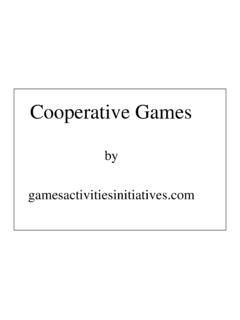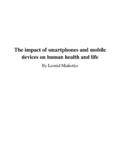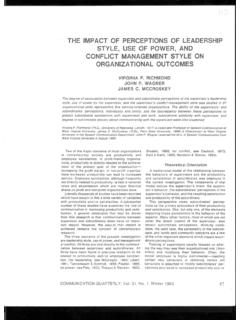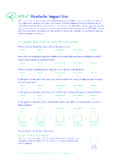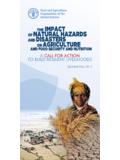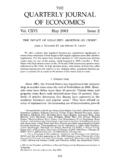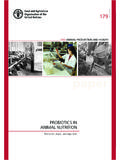Transcription of WHAT IS MINIMAL IMPACT? - Project Nature-Ed
1 Page 1 what IS MINIMAL impact ? Danny Parkin Project Nature-Ed , Box 5063, Brassall, Queensland, Australia, 4305 Introduction MINIMAL impact (MI) is a code of practice for users of natural areas designed to maintain the ecological and intrinsic values (ie. scenic amenity, cultural heritage and water catchment) of natural settings for outdoor recreation. In Australia, one of the few comprehensive MI education initiatives was the MINIMAL impact Bushwalking (MIB) campaign. This was developed by the Tasmanian Department of Parks, Wildlife and Heritage (now Parks and Wildlife, Department of Primary Industries, Water and Environment) in 1986 to combat recreational impacts caused by both increasing numbers and poor MINIMAL impact practices of walkers venturing into the South-west Tasmanian World Heritage Area (O Loughlin 1989).
2 MIB has since been adapted to a varying extent by each State and Territory nature conservation agency to deal with recreation induced environmental impacts in their parks, forests and reserves. The MIB concept is also known and promoted as Walk Softly , Tread Lightly , and No-trace Camping . The main message that MI education campaigns aim to convey is to leave the least possible trace of one s presence or journey through the bush (O Loughlin 1989). Thus, many MI education campaigns focus on six major issues: where and how to walk, campsite modifications, campfires, rubbish, hygiene and the feeding of wildlife.
3 These issues represent many of the ecological impacts caused by recreators to natural environments. Many land management agencies spend considerable amounts of time and money addressing these issues. A brief discussion of each of these issues is provided below. Where and how to walk MI education promotes the concept that walkers should stay on tracks where provided and to spread out in open untracked areas. In areas where no directional signage is given, good map reading and navigation skills are preferred to marking the route.
4 The modern practice of marking routes with flagging tape poses a number of social and environmental problems as many bushwalkers do not wish to see brightly coloured pieces of plastic tied around trees. As markers deteriorate, pulled down or replaced, they inevitably become litter on the ground. This adds to the deterioration of a site and loss of amenity. On tracks, walking through muddy sections is promoted in an attempt to reduce track widening in these locations. It also lessens the likelihood of surrounding vegetation being trampled as recreators try to skirt around muddy or boggy track sections.
5 Skirting around muddy track sections only exasperates the problem at these locations by causing track widening or track braiding. This action may also reduce the likelihood of plants establishing beside walking tracks in these areas. Thus, contributing to track expansion. Campsite modifications MI education promotes the concept that no-trace camping is the preferred practice. Emphasis is placed on informing recreators that they should not clear an area to set tents up on or construct fireplaces.
6 Page 2 PO Box 5063 Brassall QLD 4305 of drainage ditches to divert rainwater runoff or using native vegetation for shelter or bedding materials are other practices that should not be undertaken. While drainage ditches can be filled in, fireplaces taken apart and the ashes spread or buried, and leaf litter placed back over cleared areas, it is quite difficult to remove all evidence of a group camping in a natural area. This is especially the case if a group has been there for some time. In most instances, site modifications (eg.)
7 Firerings, cleared sites) are left for the next group to use. Site engineering generally causes some form of permanent scar that may take the natural environment many years to recover from, if at all. Campfires MI education promotes the concept that fuel stoves should be used where possible and if a fire is necessary, it should be as small as possible to achieve its purpose. For many people the outdoors and campfires are a valued part of camping. Campfires are used to cook meals and to boil the billy.
8 They also provide warmth on wintry nights and opportunities for social interaction. However, while the warm outer glow of a campfire is quite tempting, the impacts that they cause are not readily apparent as site degradation accumulates over time (O Loughlin 1989). At some campsites, firewood is supplied. However, the decision to supply firewood in camping areas is a management decision to reduce the likelihood of people scavenging and depleting the local area of fallen or dead standing timber.
9 This action also reduces the likelihood of people trying to burn live timber. Campfires cause the depletion of available homes and nutrients for wildlife, scarring and death of plants, sterilisation of the soil surface and structural damage, and the visual scarring of sites through the accumulation of charred and incombustible rubbish (eg. food scraps, tins, aluminium foil, plastic, cigarette butts, etc.) (Batt 1994). Rubbish MI education promotes the concept that visitors should adopt a carry in carry out ethic in natural areas.
10 This includes food scraps and other rubbish that may or may not be able to be burnt, buried or left for wildlife to devour. Food scraps can attract and support excessive numbers of scavenging animals (eg. crows, currawongs, kookaburras, goannas, emus, common brush tail possums and grey kangaroos). Human diseases may also be spread to native wildlife that scavenge and feed on scraps left behind (Hammitt & Cole 1987). The reluctance to carry out leftover food and other scraps by many outdoor recreators needs to be addressed, as these items may also affect nutrient balances in soil, or introduce weeds if the scraps contain seeds.


